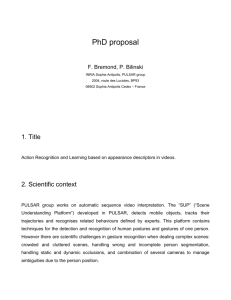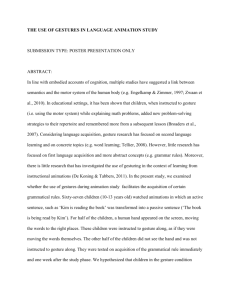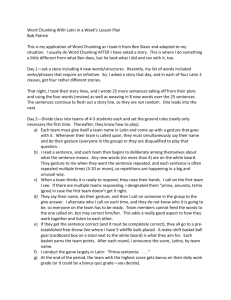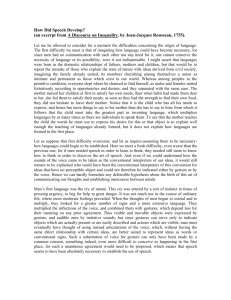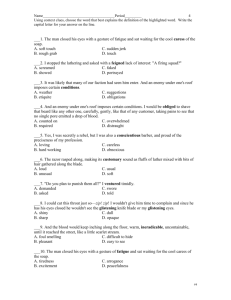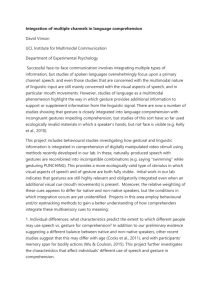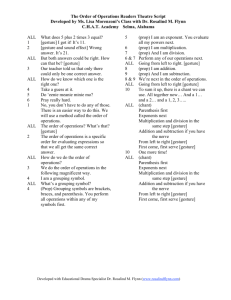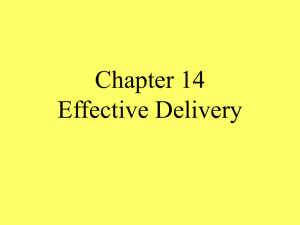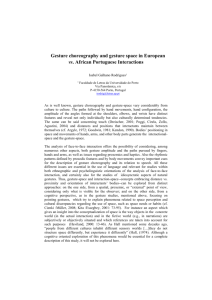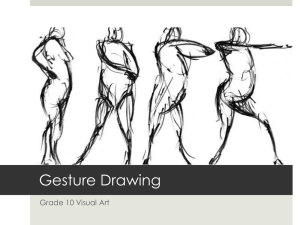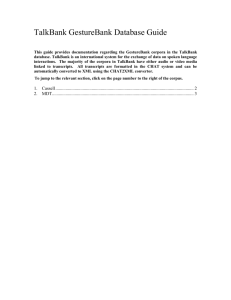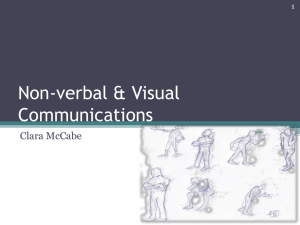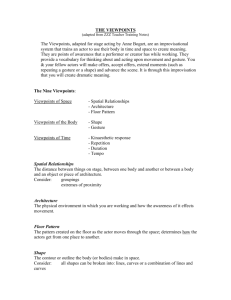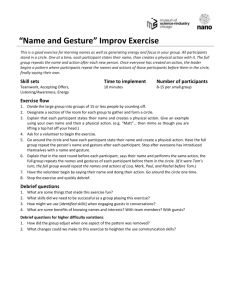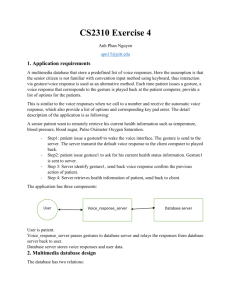My Portfolio
advertisement
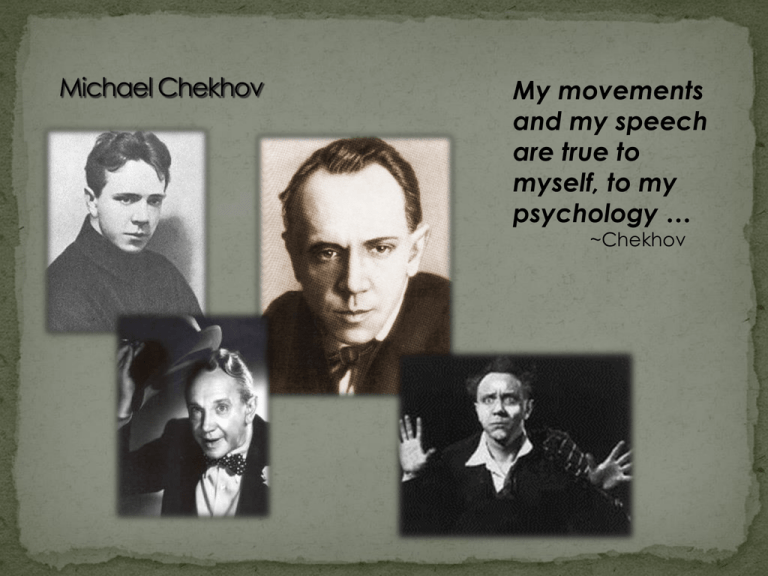
My movements and my speech are true to myself, to my psychology … ~Chekhov He studied under Stanislavski at the Moscow Art Theatre, where he was noted to be Stanislavski’s best student. He moved away from Stanislavski’s system later in life and led the company under the name the Second Moscow Art Theatre. His father was brother to the famous playwright Anton Chekhov. An outward gesture that represents the character’s inner psychology Later in rehearsal and character development, the gesture is suppressed. The final result is internalized by the actor. “… the tendency to produce such a gesture undoubtedly exists in our own mind. And this tendency is the same which stimulates us to produce physical “breaking,” “drawing,” or “grasping” gestures, if such seem necessary. “Hamlet …, when the curtain is raised, can sit motionless in the throne room. This is your imagination. But Hamlet’s psychological gesture may be a large, slow, heavy movement with both arms and hands…for Hamlet’s dark, depressed mood… And this gesture is what you must do in reality … Then try to act and speak like Hamlet, having now the psychological gesture only in the back of your mind.” • Pick a “speech” from a Shakespeare play that you are not completely familiar with. • Execute the gesture without words, then with words, and finally, only the words without the gesture. • Choose several gestures for each transitional moment (beat change) of the speech, and follow the step above for each, transitioning between each gesture. • Find two contrasting psychological moments in your speech. • “Allow your soul to make a free and unbroken transition from one pole to the other.” • Repeat the transition several times, extending the duration of it each time.





